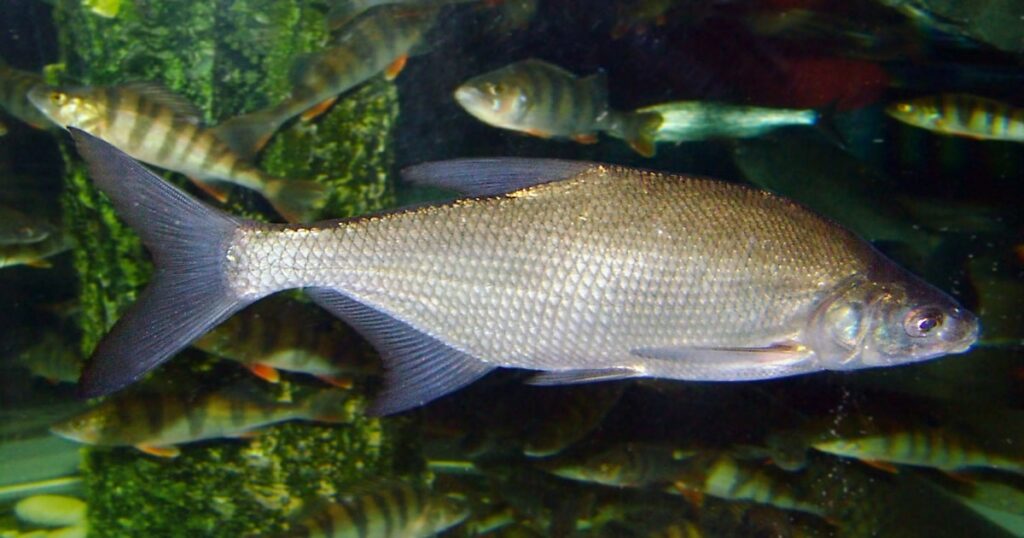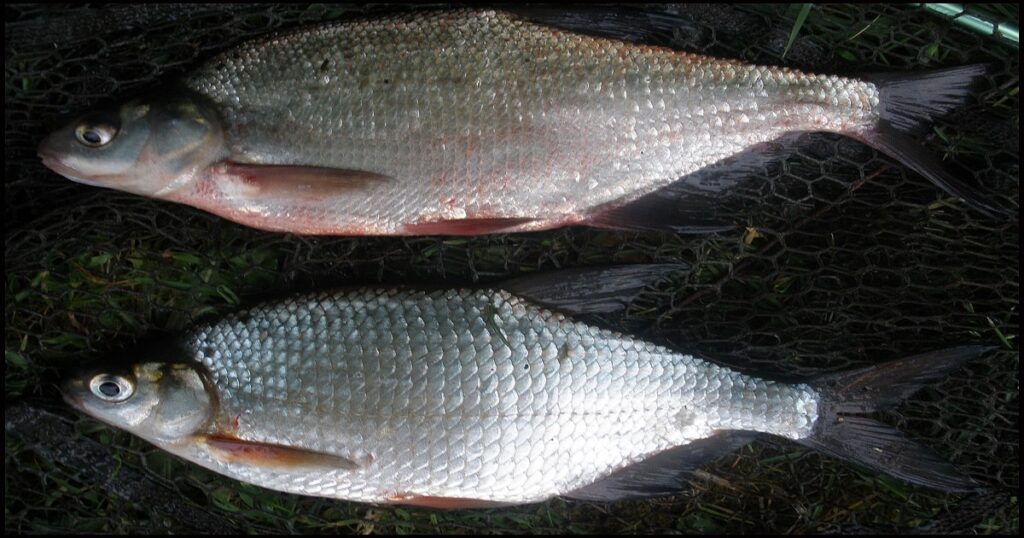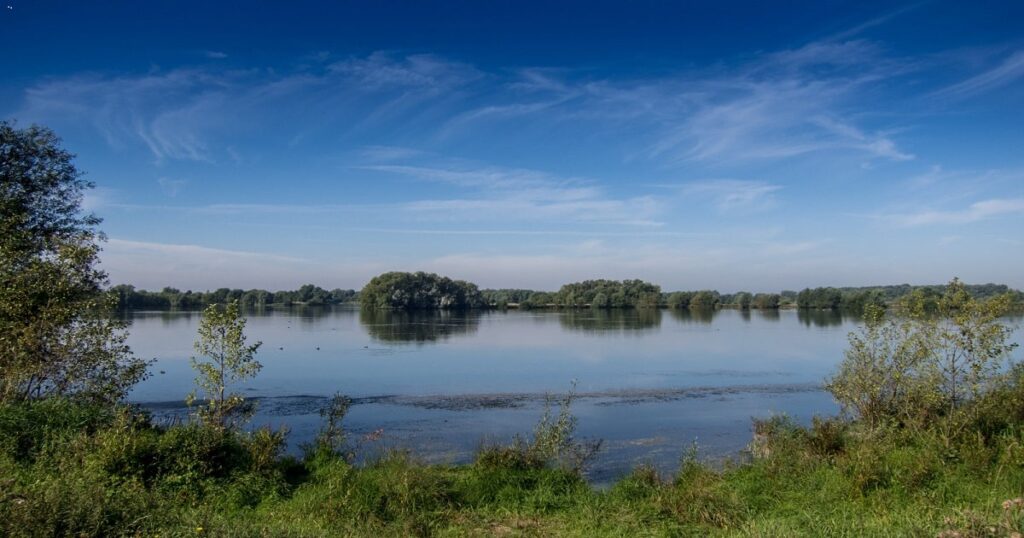Bream are a popular catch among anglers due to their plentiful nature and the challenge they present. They belong to a family of freshwater and marine fish, and are recognized for their deep, flattened bodies and distinctive fin structures. In Europe, the term “bream” typically refers to the common or bronze bream (Abramis brama) and silver bream (Blicca bjoerkna), among others. It’s essential for fishing enthusiasts to be able to identify the different species of bream, as well as hybrids.
Bream Habitat
Bream, commonly found in Europe, Asia, and North America, thrive in freshwater environments such as rivers, lakes, and ponds. They prefer slow-moving or still waters with plenty of aquatic vegetation and a muddy or sandy bottom. This offers them ample hiding spots from predators and provides a rich feeding ground.
Feeding Habits
Bream are primarily bottom-feeders, using their specialized mouths to sift through the substrate for small invertebrates, insect larvae, and aquatic plants. They have a varied diet, which can include molluscs, crustaceans, and even smaller fish. This adaptability makes them highly successful in various aquatic environments.

Size and Lifespan
Bream fish come in a range of sizes depending on the species, with the common bream typically growing up to 40-60 cm (16-24 inches) and weighing between 2-4 kg (4.4-8.8 lbs). Bream have an average lifespan of 10-15 years, but some specimens have been known to live for over 20 years.
How to Identify a Bream
General Characteristics
- Body Shape: Bream possess deep, laterally compressed bodies which allow them to glide effortlessly through water.
- Scales: Their large, silvery scales are a notable feature, reflecting light and making them easily visible in clear waters.
- Mouth: They have a small, downturned mouth which is indicative of their bottom-feeding habits.
- Fins: The dorsal fin of bream is long and extends back towards the tail, aiding in stable swimming. Their anal and pelvic fins often exhibit a reddish or orange tint, especially in males.
Common or Bronze Bream (Abramis brama):
- Coloration: Common bream have a dark back with bronze hues, transitioning to lighter shades on the sides and belly.
- Eye Hue: Their eyes may carry a slight golden or reddish hue, adding to their unique appearance.
- Size: They are generally larger than silver bream, with mature individuals often exceeding 30 cm in length.
Silver Bream (Blicca bjoerkna):
- Coloration: As the name suggests, silver bream exhibit a more pronounced silvery coloration compared to common bream.
- Size: They are smaller, with a maximum length of about 25 cm.
- Scale Size: Silver bream have larger scales relative to their body size compared to common bream.
Hybrids:
- Occurrence: Hybrid bream can occur naturally or through breeding programs, resulting from the crossing of common and silver bream.
- Identification: Identifying hybrids can be challenging due to the blending of characteristics from both parent species. They may exhibit intermediate size, scale count, and coloration.

Record Catches
There have been some impressive common (or bronze) bream catches over the years. The current British Record stands at an astonishing 22 lbs 11 oz (10.3kg), caught by angler Scot Crook from Ferry Lagoon, a 160 acre water based in Cambridgeshire, United Kingdom.

Silver beam, whilst not growing to as large in size, can be considered a specimen if over 2 lbs, catches above 3 lbs are very rare. The current British record stands at 3 lbs 4 oz (1.47kg), caught by Gareth Evans at Mill Farm Fishery, Sussex. It should be noted that hybrid bream are not generally recorded officially.
How to Catch Bream with Fishing Tackle and Bait
Successful bream fishing requires a combination of the right tackle, bait, and technique. For tackle, use a lightweight rod and reel, 4-6 lb test monofilament line, and a small hook (sizes 10-12).
When fishing for bream, it’s essential to understand their preferred habitats to increase your chances of a successful catch. In lakes, bream tend to congregate around areas with abundant aquatic vegetation, fallen trees, or other submerged structures, as these environments provide them with shelter and a rich food source. Similarly, in rivers, bream are often found near weedy banks, around bridge pilings, or in slower moving water where there’s plenty of cover. Casting your line near these structures or vegetation increases the likelihood of attracting bream, as they often patrol these areas in search of food.
One effective technique to target bream is using a method feeder. This approach entails a feeder filled with bait alongside your hook, which gradually releases the bait into the water, attracting bream to your hook. Fill the method feeder with a mixture of groundbait and your chosen bait, cast it near the identified structures or vegetation, and wait for the bream to come to you. The gradual release of bait creates a trail that can entice cautious bream to feed, increasing your chances of a catch.

Another successful tactic is ledgering, which involves casting a baited line with a weight attached to it, allowing the bait to sit on the bottom. This method is particularly effective in deeper water or when bream are feeding near the bottom, which is common during colder months. The weight keeps your bait in place, allowing bream to find it easily. Using a sensitive float or bite indicator with this method can help detect even the subtlest bites, as bream are known for their cautious feeding behavior. Remember to be patient, allowing the fish to take the bait fully before setting the hook to ensure a successful catch.
Bream are attracted to a variety of baits, including live baits like maggots, worms, and small crustaceans, as well as artificial baits such as bread, sweetcorn, and pellets. Experiment with different baits to find what works best in your local waters. In the summer months a large shoal of bream can get through a lot of bait so make sure you have plenty of stock during those times. Groundbait mixes, from standard breadcrumb mixes, through to specialized mixes found in tackle shops, should all be considered when targeting bream.
Conclusion
Bream fishing is an enjoyable and rewarding pastime for anglers of all ages and skill levels. With their fascinating biology, varied diet, and widespread distribution, these fish offer an exciting challenge for those looking to hone their angling skills. So grab your tackle, find the perfect bait, and head out to your local waterways for a fantastic day of bream fishing!